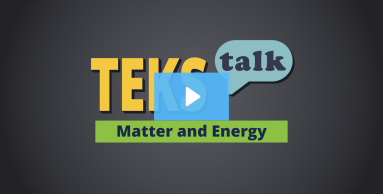
Knowledge and Skills Statement
The further explanation is designed to be a resource for educators that helps them better understand the topic their students are learning. Further explanations may be written at a more complex level than would be expected for students at the grade level.
During a chemical change, the atoms of the substance that were combined are rearranged to make new elements and/or compounds. The following chemical changes may be observed: a change in thermal energy (increase or decrease in temperature which is not a result of a state change), the production of a gas (bubbling), the production of a precipitate (a solid that formed after mixing liquids), or a color change. One observation is not always sufficient to determine a chemical change.
Research
Lott, Kimberly, and Anitra Jensen. “Changes Matter!” Science and Children 50, no. 2 (October 2012): 54–61. https://www.nsta.org/science-and-children#tab.
Summary: "Changes Matter" outlines common misconceptions and possible overgeneralizations that students make regarding a physical change versus a chemical change. Investigations are included to help identify evidence of chemical changes and differences between chemical and physical changes.
